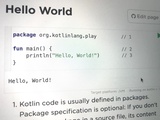Posts
Spring Boot Configuration Best Practices
What happens when you split systems into many microservices
Moving from monolithic applications into microservices is current trend in software design. Let’s identify some pros and cons of both architectures and challenges one may face during the system transformation.
Building Data Pipeline with Kotlin Coroutines Actors
Applying Courage in Software Development
Job is not a place for feats. But sometimes you have to be brave to overcome and complete that others considered impossible.
How Does New Oracle JVM Licensing Encourage Agility
Common Java Application Anti-patterns and Their Solutions
Customizing REST API Error Response in Spring Boot / Spring-Security-OAuth2
Defining error format is important part of REST API design.
Spring-Boot and Spring Security provide pretty nice error handling for RESTful APIs out of the box. Although it has to be documented, especially when contract-first approach to API design is used.
It is good idea to follow some common format for error responses. But OAuth2 specification and Spring Boot format may not satisfy those requirements.
External Site Monitoring
How did you know that your site is down? From your customers? Then it’s time to start using some external monitoring tool.
The Programmers Oath
A must-see speech by Robert “Uncle Bob” Martin on programmers responsibilities in digital world and 9 principles every programmer should follow (“The Coders’ Code”).






